Products You May Like
Get full access to Outside Learn, our online education hub featuring in-depth fitness, nutrition, and adventure courses and more than 2,000 instructional videos when you sign up for Outside+
Sign up for Outside+ today.
“Backcountry skiing” means different things to different skiers. Backcountry purists log serious miles and thousands of feet of vert to access the best views and most technical lines. These skiers need ski boots that are on the same page: lightweight alpine touring boots that feature tech inserts in the toe, burly Vibram soles for bootpacking, and above all, walk-modes that give you ample fore-aft range of motion so you’re not killing your ankles and calves on long, steep tours.
Other backcountry skiers are in it for untracked powder—they head out of the resort’s backcountry gates to ski and skin lap after lap of pristine snow just beyond the resort boundaries. These skiers don’t care so much about how light their equipment is so long as it crushes the downhill. It’s for this type of skier that the hybrid backcountry boot category was born. Hybrid boots bridge the gap between the downhill performance of alpine boots, and the uphill performance of alpine touring boots. They may also feature tech inserts in the toe and walk-modes with an acceptable range of motion for longer tours, but they tend to be heavier because they’re made with burlier plastics and materials that increase downhill performance. These boots also often feature GripWalk or Multi Norm Compatible (MNC) soles that may be compatible with the bindings mounted on your resort skis, meaning they can be great one-boot quiver options that you can ski in and out of the resort.
Because we all have different backcountry agendas, we’ve included 2023’s best backcountry boot options in both the hybrid and alpine touring categories. If you’re looking for one boot to use inbounds and in the backcountry, peruse our top-rated hybrid options. If you’re a dedicated backcountry skier who’s looking to shave grams to make big backcountry missions more doable, check out the boots labeled under the “Alpine Touring” category. Whatever you choose, make sure you carefully consider and research your boot/binding compatibility.
Section divider
Tecnica Zero G Peak Carbon
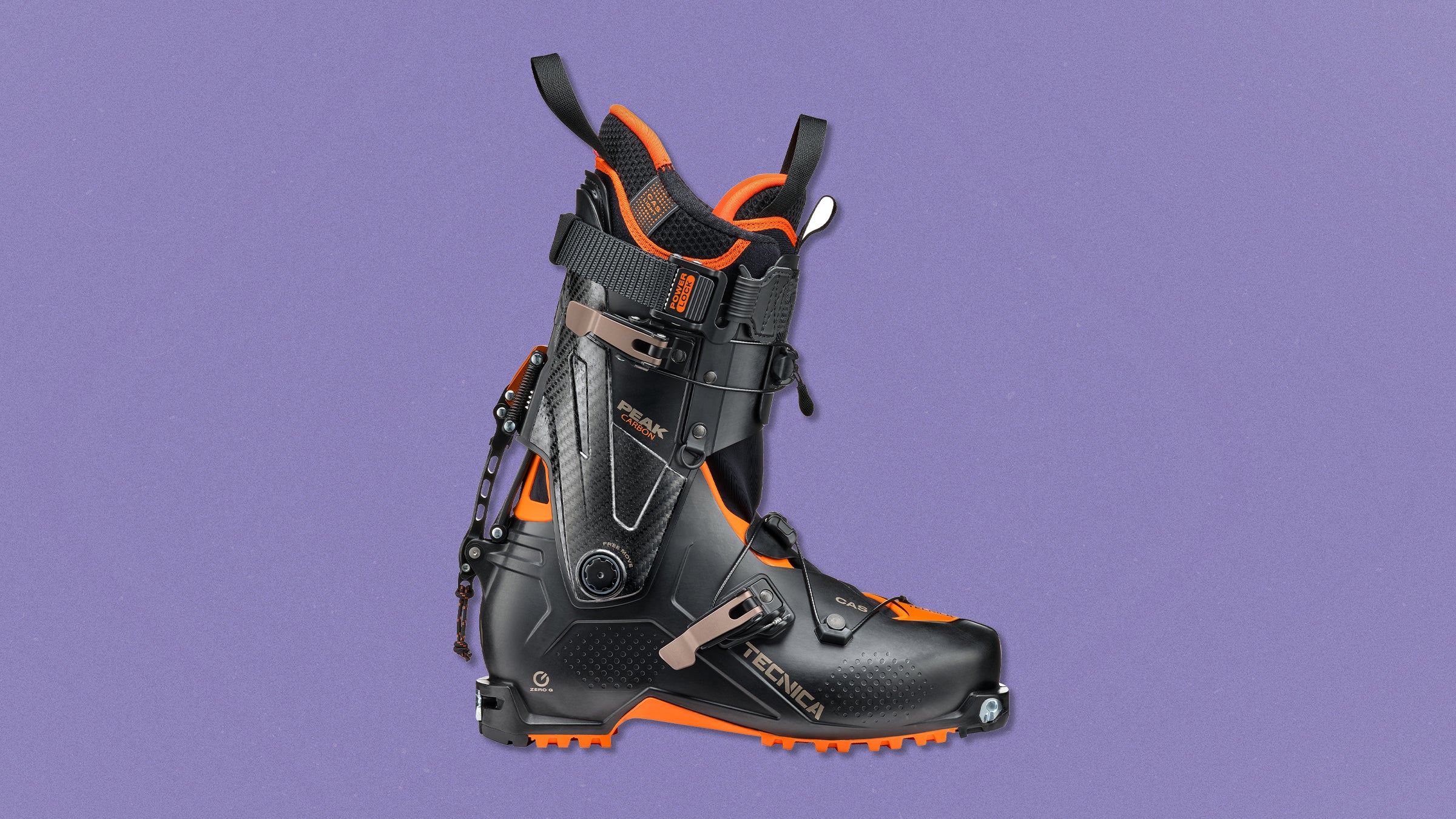
Category: Alpine Touring
Flex: 130
Last: 99mm
Weight: 990 grams
Size range: 23.5-30.5
Price: $950 (Buy Now)
Binding compatibility: Multinorm Compatible (MNC), Sole.ID, Tech/Pin bindings
Best for: Big backcountry missions that demand a lightweight boot for the ups, but a beefy boot for the downs
After weeks of skiing spring mashed potatoes in Colorado, our tester liked this sub-1,000-gram boot so much that he brought it to Alaska to climb Mount Hunter (“Begguya” in Dena’ina) and ski 7,500 feet of everything from wind board to powder to corn. The firm, progressive flex means it skis well in all conditions except deep, heavy/hot powder. “I see this boot really excelling on traditional big spring missions, where weight matters and you’ll ski every snow condition,” he said. “I also wouldn’t hesitate to use it midwinter on my 105mm powder skis.” The fit accommodated his high instep and is highly customizable due to its CAS (Custom Adaptive Shape) technology, which allows for a 2mm punch, but those with lower-volume feet may want a thicker liner. Our tester did miss driving into a traditional ankle buckle, but the cable closure system held his forefoot in place without any rubbing or slipping.
Section divider
Fischer Ranger Pro 130 GW DYN

Category: Hybrid
Flex: 130
Last: 99mm
Weight: 1,780 grams
Size range: 23.5-30.5
Price: $850 (Buy Now)
Binding compatibility: MNC, GripWalk (GW), Tech/Pin
Best for: Resort skiing and short backcountry tours
Having a loose, articulating upper cuff is great for walking, but, without the stability of a fixed forward lean, terrible for skiing downhill. Most boots flip into walk mode with a notched arm that fits into a slot on the heel and locks the cuff into place for the downhill, but the Fischer Ranger Pro 130 GW DYN has a low-profile ski/walk buckle just under the top buckle of the cuff, so you don’t have to worry about snow caking up and preventing it from locking into place. Our Aspen-based tester appreciated the security this boot provided on high-consequence spring lines with spicy entrances. “This is a great option for aggressive backcountry skiers, or people who want only one boot that can do it all and ski resorts more than the backcountry,” he said. On the heavier side, and with limited range of motion in walk mode, this is not the move for long approaches or skiers who want to go fast uphill, but it’s perfect for sidecountry enthusiasts as well as sled-skiers who don’t walk very far. If a 130 flex seems like overkill, choose one of the regular Ranger models (not Ranger Pro) in a 105, 110, 115, or 120.
Section divider
K2 Dispatch Pro

Category: Hybrid
Flex: 130
Last: 100mm
Weight: 1,502 grams
Size range: 24.5-30.5
Price: $1,000 (Buy Now)
Binding compatibility: MNC, Sole.ID, Tech/Pin
Best for: Backcountry skiers looking for a boot that can handle occasional resort laps
Some skiers never use laces in their interior boot liners, while others swear by them. Our tester falls in with the latter group, so he was psyched on the K2 Dispatch Pro’s BOA system, which allow you to crank the liners to fit snugly with smooth, even contact on the shin without having to unbuckle the boot. Flexible plastic and a generous walk mode with 60 degrees range of motion make for easy striding on shorter tours and morning uphill resort laps, although the shell’s slight gap over the forefoot in walk mode can gather snow. The four buckles stiffens things up impressively for downhill performance, allowing the boot to handle aggressive and bigger skiers, but it still feels a little soft in warm spring temperatures. Our tester loved how the little knobs kept the power strap from riding up into the shin when left loose, even if he wished for a burlier strap. “I wouldn’t recommend this as a daily-driver resort boot for aggressive skiers, but it’s ideal for a backcountry skier who still wants the stability of four buckles,” he said. If you need a softer flex, consider the toned-down versions without the BOA liner: the Dispatch LT (115 flex), women’s Dispatch LT W (110 flex), the Dispatch (110 flex) or women’s Dispatch W (105 flex).
Section divider
Scarpa 4 Quattro XT
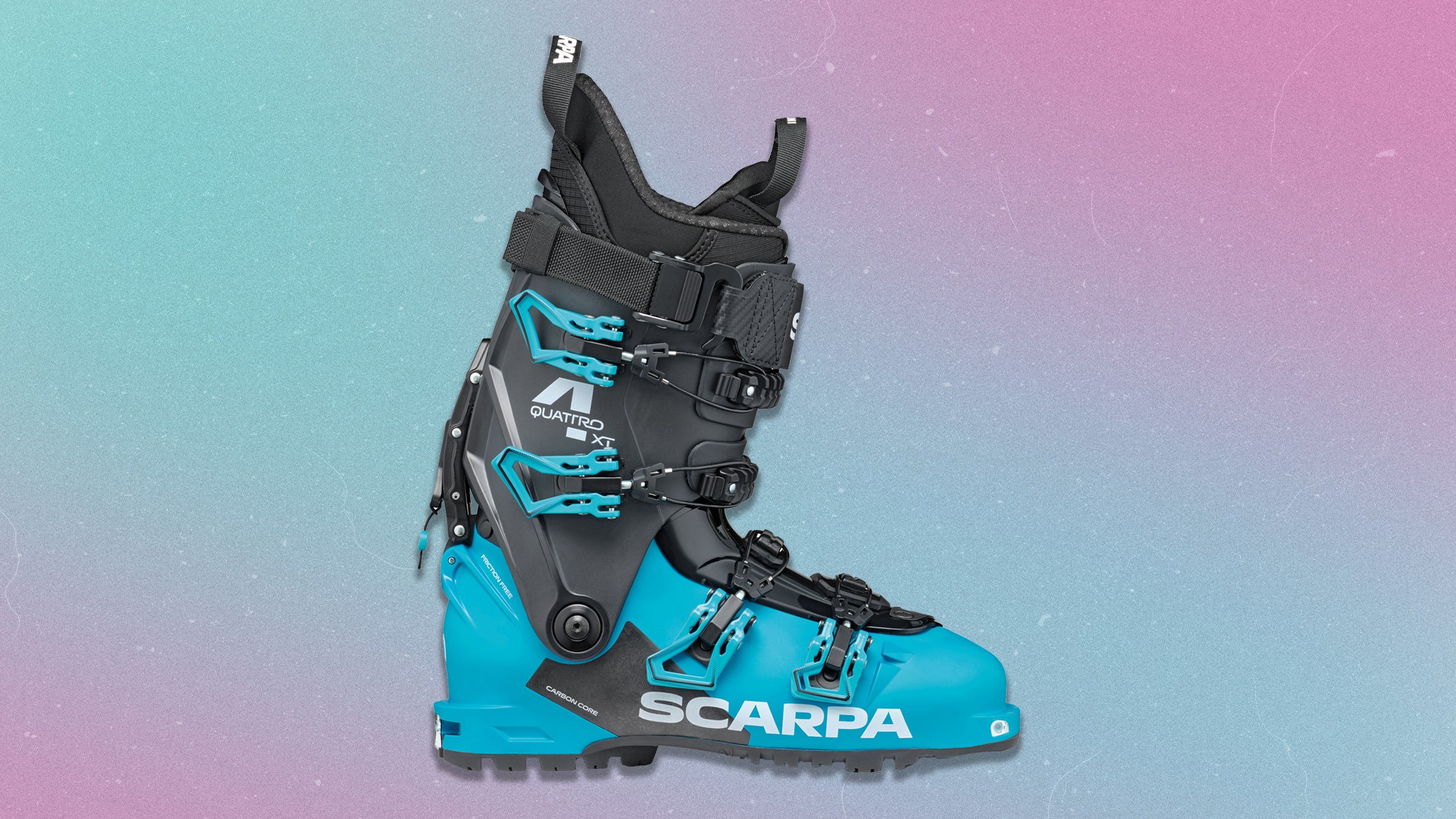
Category: Hybrid
Flex: 130
Last: 100mm
Weight: 1,500 grams
Size range: 24.5-31
Price: $799 (Buy Now)
Binding compatibility: MNC, GW, Sole.ID, Tech/Pin
Best for: 50/50 resort and backcountry skiing
Our 200-pound tester cranked on the Scarpa 4 Quattro XT for a full day of spring bump skiing with the local freeride team and had no problems keeping up while driving a 110mm-waisted ski. He also noted the “really aggressive” fit out of the box, with the benefit of “incredible precision and power transferred to the ski edge”—but get this model tweaked by a bootfitter, as “it can get cold and must be adjusted throughout the day.” Scarpa nailed the flex; our tester called it “one of the truest 130 flexes of any hybrid boot I’ve tried. I typically find Grilamid plastic boots to be too rigid, almost ‘pingy’ with their flex, but this one has an excellent progressive flex curve and suspension.” At just 1,500 grams, and with 61 degrees of articulation in walk mode, it’s ideal for the competent, polished skier who knows how to drive and angulate a ski on big resort days, but wants to use the same boot for occasional 3,000-foot touring excursions. If you’re looking for something a little softer, consider the Scarpa 4 Quattro XT in the 115 flex model.
Section divider
Head Kore 120 GW
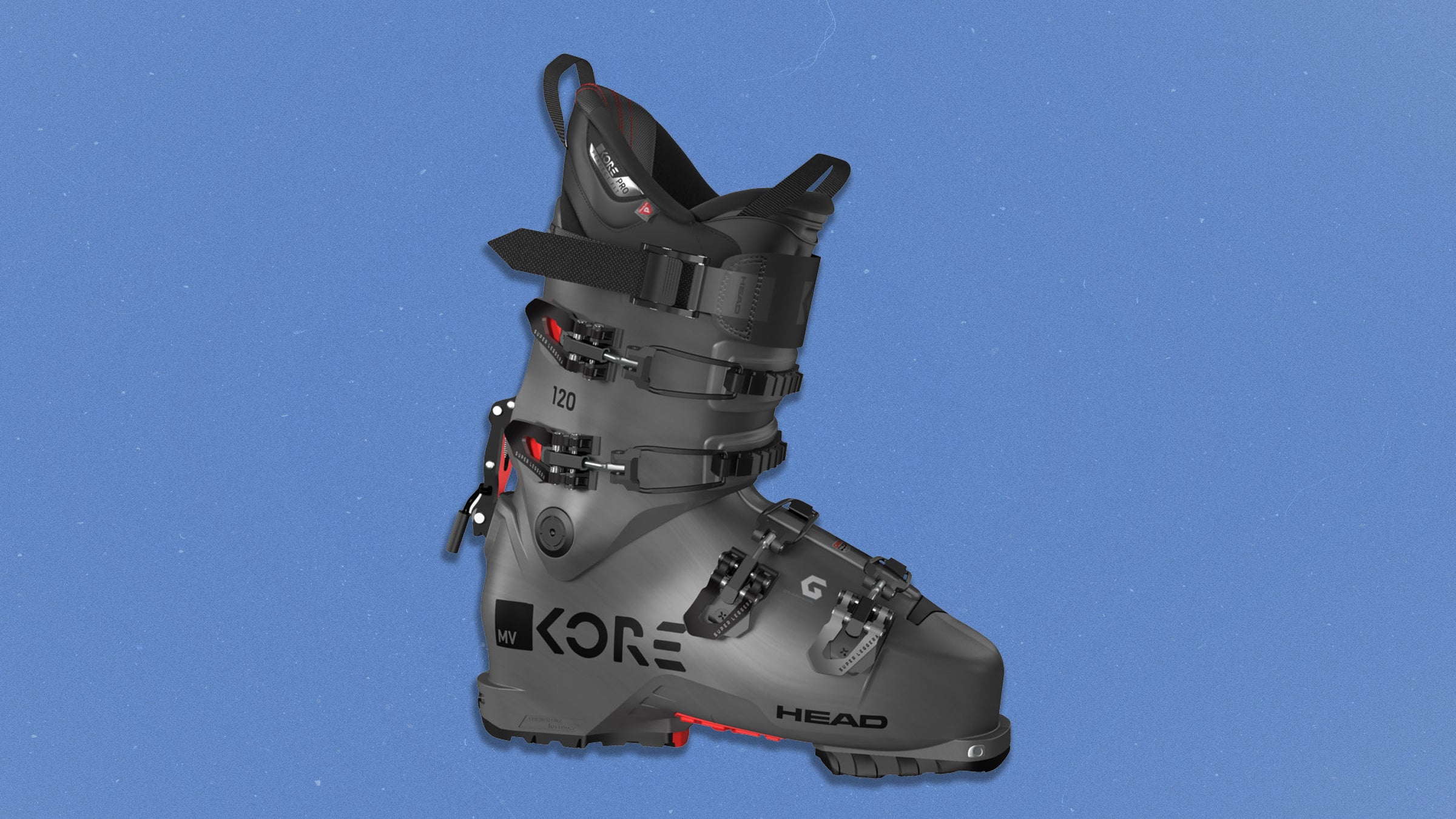
Category: Hybrid
Flex: 120
Last: 100mm
Weight: 1,952 grams
Size range: 24.5-30.5
Price: $1,050 (Buy Now)
Binding compatibility: GW, WTR, Sole.ID, Tech/Pin
Best for: Sidecountry adventures where the downhill counts and the uphill is short
The Head Kore 120’s ability to handle all conditions and drive a bigger, heavier resort ski makes it a joy in fresh powder and mid-afternoon chop. “I loved the progressive, firm flex when smashing sturdy bumps with 3 to 4 fresh inches of snow and 6- to 8-inch wind drifts,” our mountaineering-focused tester said. “The boot was able to react well to the changing conditions of dust on crust to deep-ish powder in the bumps.” He praised the out-of-the-box comfort for his wide foot with a skier’s sixth toe, but felt that roomy toe box sacrificed some performance. It skis significantly better than a traditional mid-weight touring boot inbounds, though it’s too heavy for significant uphill tours. The firm flex allows the boot to work across any snow condition or temperature and would be ideal in places like Teton Pass, the Jackson Hole sidecountry, or other lift-access-touring destinations like Chamonix, France, or Revelstoke, B.C. Choose this one for the downhill performance, not because you’re concerned with the extra 300 grams. Also available in 130 and 110 flex models.
Section divider
La Sportiva Skorpius CR II
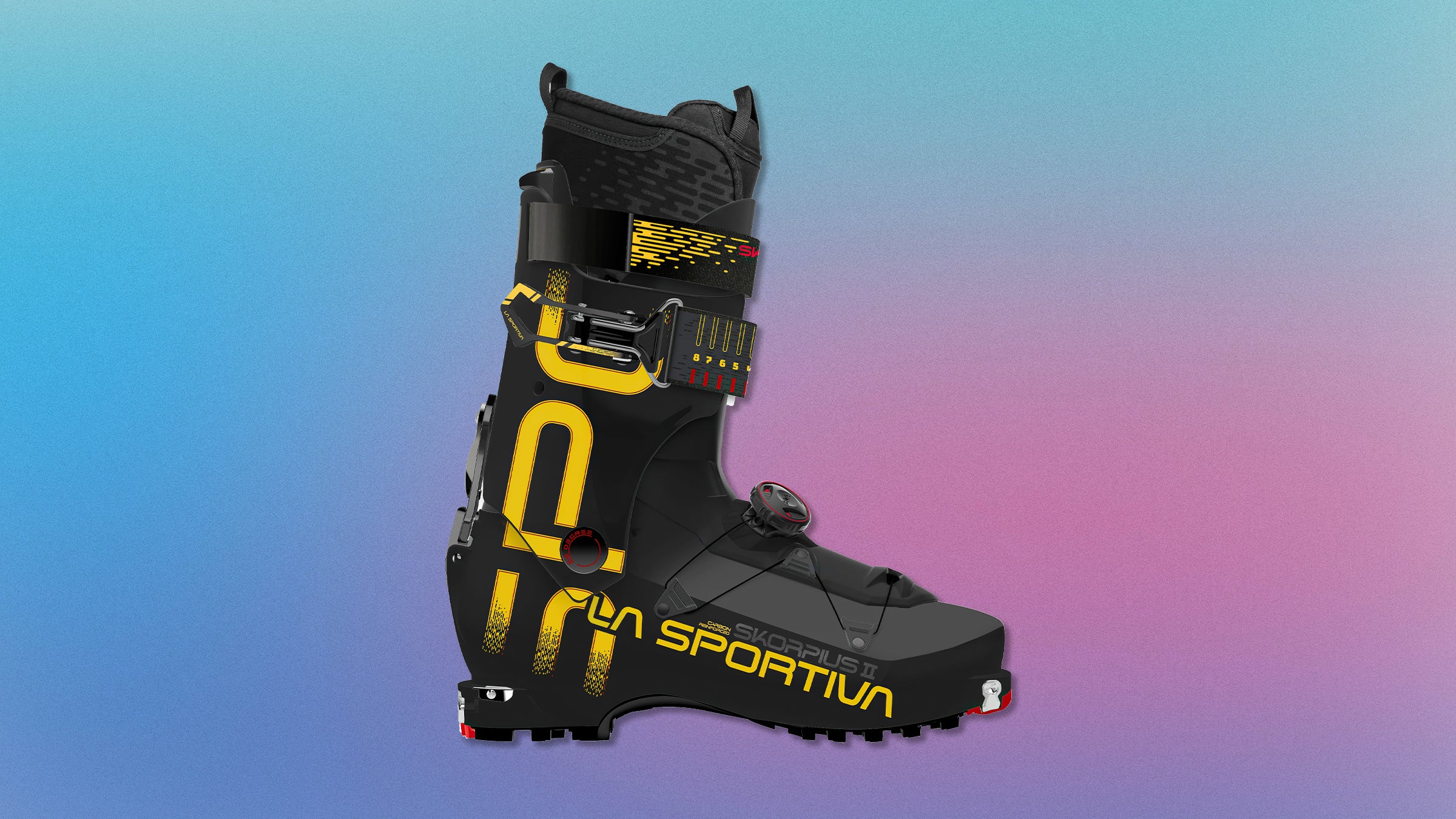
Category: Alpine Touring
Flex: 100
Last: 102.5mm
Weight: 1,190 grams
Size range: 23-31.5
Price: $849 (Buy Now)
Binding compatibility: MNC, Tech/Pin
Best for: Long backcountry missions where the uphill performance is just as important as downhill performance
The La Sportiva Skorpius CR II is so walking-focused with its wide last, medium flex, and minimal buckling that one tester wasn’t sold on it as sturdy enough until he tried it. “After my first two turns, I really thought the boot was going to be soft and mushy and that I was going to have to do more survival skiing,” he said after ripping corn laps off Red Mountain in Colorado’s Rocky Mountain National Park. “But I was surprised by the lateral stiffness and how the boot delivered power to the edge of the ski.” The BOA mechanism securing the forefoot stays extra comfortable for testers on long walks by enabling micro fit adjustments on the fly, as does the adjustable top strap. A swinging rear locking mechanism controls the 38 degrees of forward flex and 33 degrees back, which makes long tours a breeze. One ex-racer said he’d still like to have a little more progressive forward flex, but upward mobility is the priority over powerful downhill performance here.
Section divider
Scarpa F1 GT

Category: Alpine Touring
Flex: 90
Last: 100mm
Weight: 1,162 grams
Size range: 24-31 (also available in women’s 23-27)
Price: $799 (Buy Now)
Binding compatibility: MNC, Sole.ID, Tech/Pin
Best for: Dedicated backcountry skiers with big missions on the agenda
Unlike several other lightweight boots in this category, Scarpa ditched the BOA closure from its previous F1 iterations in favor of a Z-cable to lock down the instep, which our Colorado-based tester called a “game changer for the heel-holding power in the backcountry-specific boot class that makes these boots much more widely usable.” While the security gave him a lot more confidence skiing fast on steep lines and had him choosing this boot for bigger objectives more often, he still considers the F1 GT a dedicated backcountry boot that’s not powerful enough to drive a heavier, stiffer ski. Despite the lateral reinforcements in the lower shell, another tester with an array of foot issues had no trouble punching the boot’s Grilamid material several millimeters to accommodate a comfortable fit—a challenge with some lightweight boot designs. Some wished for a dynamic power strap, but whether you’re skiing powder or variable conditions, this boot won’t have you looking back.
Section divider
Dynafit TLT X

Category: Alpine Touring
Flex: N/A
Last: 101mm
Weight: 1,030 grams
Size range: 23-30.5
Price: $800 (Buy Now)
Binding compatibility: Tech/Pin only
Best for: Ski mountaineers on a lightweight setup
For the 10th iteration of the Dynafit Tech Lite Tour, Dynafit has added a lot by not adding too much. “On a spring day in the Wyoming Range, I put these on in the car, knowing I had a few miles of heinous schwacking ahead, and they felt as comfortable as sneakers,” said one tester who loved the lightweight, low-profile construction. With a single top buckle and Dynafit’s Twistfit forefoot closure, the boot checks the box for long tours with massive vertical gain and technical ski mountaineering. It walks like a dream and skis well when driven by a proficient skier on a lightweight setup. “I was impressed by the smoothness and consistency of the flex pattern throughout the entire range of motion without a true plastic tongue on the boot,” said another Jackson tester. “I also noticed a more consistent flex across temperature ranges.” Turn initiation is “effortless,” and the boots transfer power to skis readily, though they aren’t very forgiving in variable conditions and won’t drive huge planks.
Section divider
Atomic Backland Carbon
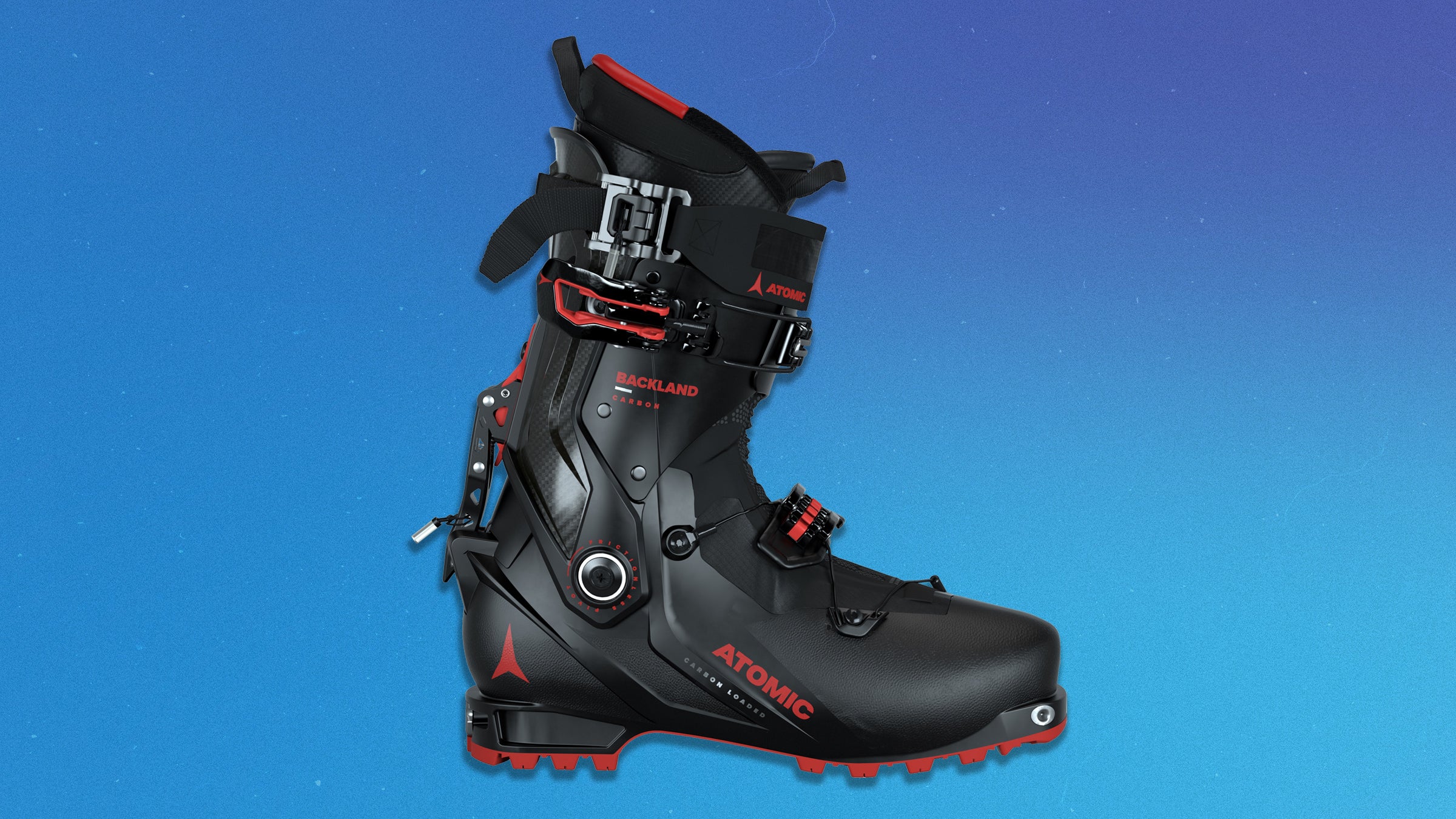
Category: Alpine Touring
Flex: N/A
Last: 98mm
Weight: 1,162 grams
Size range: 24/24.5-30/30.5
Price: $975 (Buy Now)
Binding compatibility: Tech/Pin only
Best for: Long backcountry ski tours where weight savings and ample range of motion are key
While the cable-laced buckle system on this boot wraps the entire forefoot into the shell nice and snug, it’s hard to even notice you’re wearing it with 74 degrees of mobility and frictionless pivot points. DryFit Foam in the 3D liner fit our flat- and narrow-footed tester like a glove right out of the box on a weeklong ski-touring trip in Greenland. This material is supposed to pack out less quickly than EVA foam, and the liner has breathable zones in the fabric to allow excess heat to escape, keeping feet drier and warmer. Our tester noted the stiff responsiveness of the carbon cuff when slicing through wet, grabby mank, something he appreciated in challenging conditions since it held him firmly in his stance without bucking him too hard. The forward-lean mechanism adjusts between 13, 15, and 17 degrees and stayed clear of snow and ice in Greenland’s sticky maritime climate.
